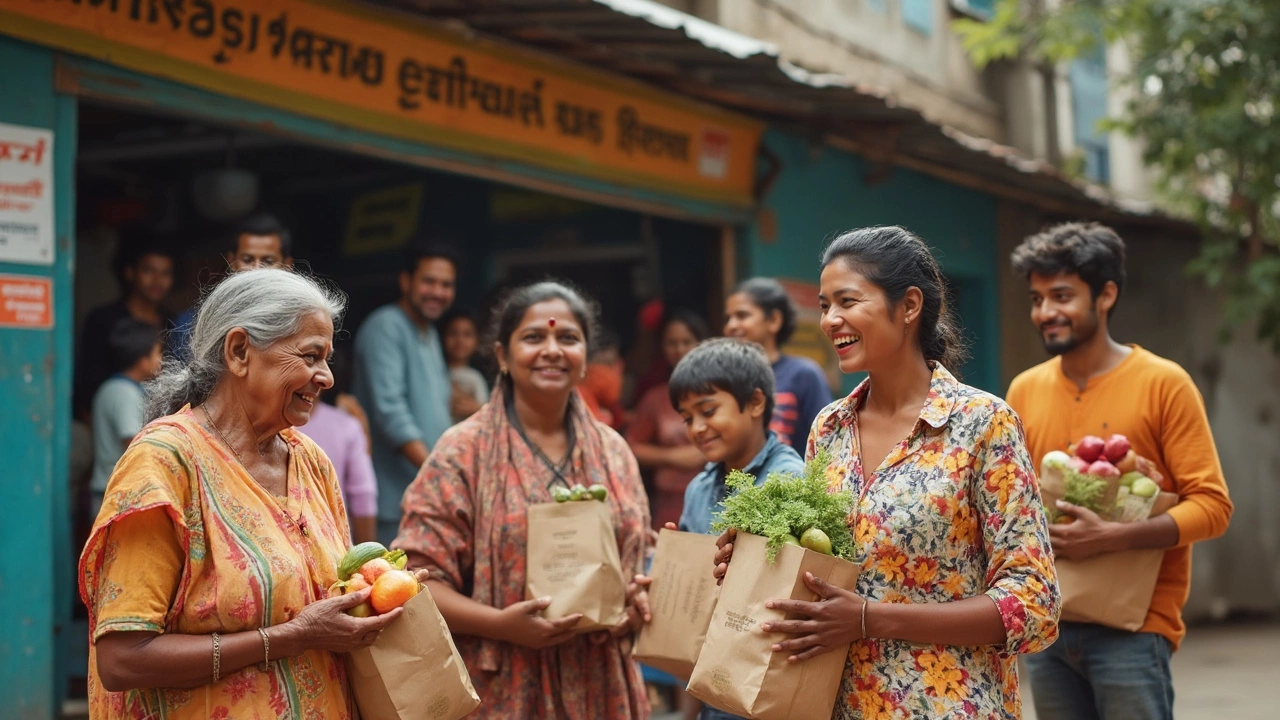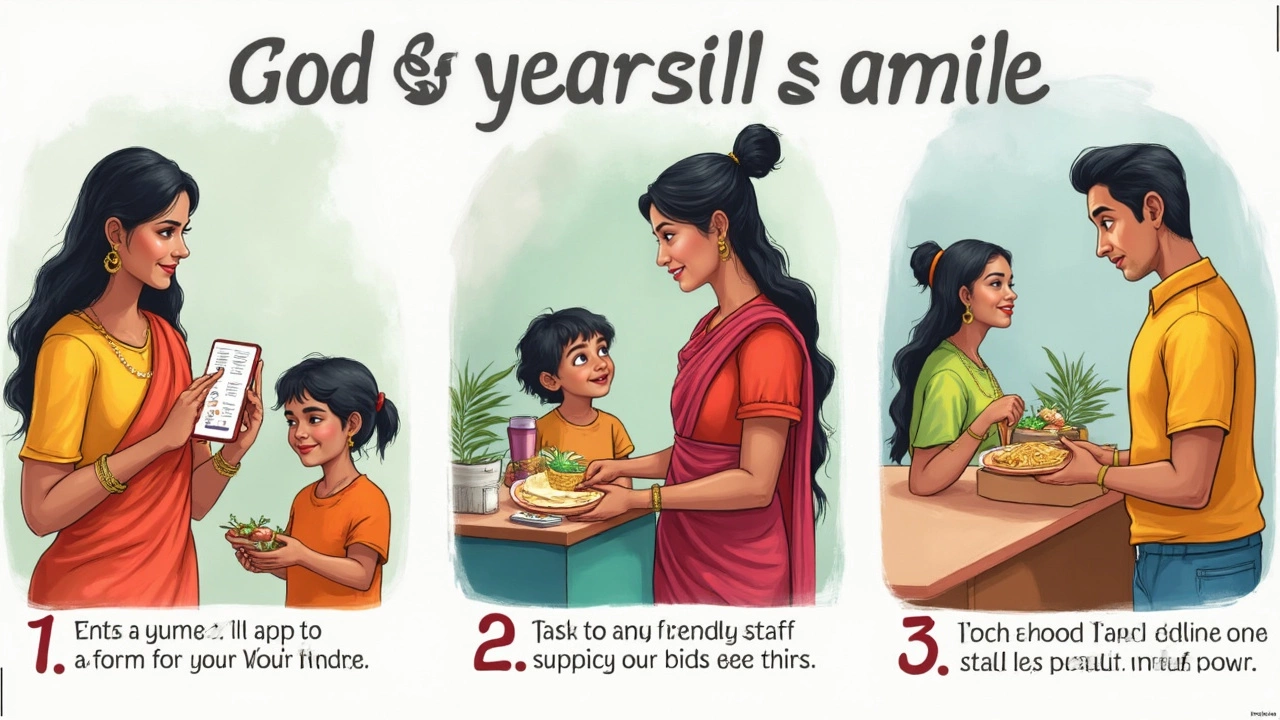Need help getting groceries? This guide explains how anyone can apply for help from a local food bank. You'll learn about eligibility, application steps, and what to expect during your first visit. Find out how food banks really work and get tips that make the process smoother. Clear answers for anyone worried about food insecurity.

- Created by: Lydia Carmichael
- Completed on: 1 May 2025
- Categories: Food Aid
Struggling to stretch your grocery budget? Food banks are set up to help, no judgment attached. The process to get food assistance is usually quick, simple, and designed for people under all kinds of circumstances—job loss, illness, low income, or even just a rough patch where your paycheck didn’t cover the month.
Don’t worry, you’re not alone. In 2023, almost one in six Americans visited a food bank at least once. Food banks aren’t just for people who are homeless or out of work. Plenty of folks—families, students, seniors—show up because life happens and food can get expensive fast.
The good news? Most food banks keep paperwork to a minimum. You usually don't need proof of income or citizenship. Often, showing an ID and sharing your address is enough. If you’re nervous or embarrassed, that’s totally normal, but the volunteers see people from every walk of life. They won’t judge—they’re just happy to help get dinner on your table.
- What Food Banks Offer
- Who Can Apply and What You'll Need
- How to Find and Contact Food Banks
- Tips for a Smooth Food Bank Visit
What Food Banks Offer
So what's actually inside a food bank? It’s more than just old cans of soup. These days, most food banks work hard to give out a mix that covers basic meals—think staples like rice, pasta, canned veggies, beans, and peanut butter. There are often extras, too, like fresh produce, meat or dairy, and personal care items like toothpaste or shampoo when supplies allow.
If you need food for your family, you’re not stuck with whatever’s in the box. Lots of food banks now set up "choice pantries." That means you get to shop, picking the things you actually want and can cook, just like at a regular grocery store (but free!).
Food banks also help different needs—many offer gluten-free, dairy-free, or baby food options if you ask. Some even have extra programs: weekend backpacks for kids, pre-packed boxes for seniors, pet food, holiday meal extras, and even easy recipes based on what you get. Volunteers are used to dealing with allergies and are happy to point you in the right direction if you mention a specific diet.
| Common Foods at Food Banks | Extras You Might Find |
|---|---|
| Canned beans & vegetables | Fresh fruit/vegetables |
| Cereal & pasta | Bread, eggs, dairy |
| Rice & grains | Personal care items |
| Soup & chili | Baby formula/food |
| Peanut butter | Pet food |
If you’re worried about getting enough, most places set limits based on your family size, but they usually try to give enough for several days. And you can often visit more than once a month—check the location’s website or call to double-check their rules.
Who Can Apply and What You'll Need
The great thing about food banks is how open they are. Most don’t put up big barriers—you don’t have to be out of work, have kids, or be in a certain age group. If you’re struggling to pay for groceries, you can probably qualify. Food pantries and food banks across the U.S. base their support on need, not strict requirements.
Here’s what you typically need to apply:
- Photo ID: This can be a driver’s license, school ID, work badge, or even a passport. It’s just to verify your identity for their records.
- Proof of address: Most places ask for a recent utility bill, lease, or any official mail with your name and address. This helps them make sure you’re connected with the right location.
- Some personal details: You might fill out a simple form with your name, birthday, phone, and household size. This info helps them prepare the right size food box for you.
Some food banks—especially those funded by federal programs like The Emergency Food Assistance Program (TEFAP)—might ask about your monthly income. But here’s a relief: Most only need a verbal confirmation, and you don’t have to bring pay stubs or tax forms. Rarely (less than 20% of food banks, based on Feeding America’s 2023 network survey) will you need proof unless you’re seeking repeat long-term help.
If you’re undocumented or worried about privacy, breathe easy. Food banks don’t share your info with ICE or immigration. They’re focused on fighting hunger, not on anyone’s citizenship status. If you’re couch-surfing or unhoused, just let them know—you won’t be turned away for not having the usual paperwork.
Here’s a quick snapshot of common requirements at U.S. food banks:
| Requirement | Percent of Food Banks Needing This |
|---|---|
| Photo ID | 85% |
| Proof of Address | 75% |
| Proof of Income | 18% |
| Household Details | 92% |
Bottom line: If you need help, don’t stress about not having “perfect” paperwork. Bring what you have, and most food assistance programs will meet you where you are.

How to Find and Contact Food Banks
If you’re looking for a food bank near you, there’s no need to jump through hoops—the info is out there and pretty easy to access. The easiest option is to check Feeding America’s online food bank locator. Just type your ZIP code, and it shows you the closest locations partnered with this national network. According to Feeding America, their site connects over 200 major food banks across the country—so there’s probably one nearby.
You can also call 2-1-1, a free and confidential hotline available in most states. You talk to a real person who can point you to local food pantries, soup kitchens, and emergency food services. You don’t have to explain your situation in detail—just ask for food help, and they guide you from there.
If you prefer, check websites for city or county governments. Libraries, health clinics, or community centers often post up-to-date lists of nearby food assistance options. Even social media can be handy—a quick search for “food bank near me” on Facebook or Nextdoor usually brings up the latest info from folks in your neighborhood who’ve already gone through the same process.
- Search: Use the Feeding America locator, Google, or ask at your local library.
- Call: Dial 2-1-1 for real-time help—available day and night.
- Ask: Community centers, churches, and health clinics know what’s going on locally with food help.
- Social media: Don’t underestimate Facebook groups for food swap and mutual aid info in your city.
Once you have a list, check food bank hours—some are only open certain days or require an appointment. During the pandemic, about 60% of food banks shifted to drive-through or curbside pick-ups to keep things safer for everyone, so check whether you need to register in advance or just show up. Here’s a quick comparison of how to reach out:
| Method | Response Time | What You’ll Need |
|---|---|---|
| Food bank website form | Flexible, often 24/7 | Name, address, maybe phone or email |
| Phone call (2-1-1 or direct) | Immediate during business hours | Basic details, no documents usually needed |
| Walk-in | Same day (depends on hours) | ID, sometimes proof of address |
If you’re worried about privacy, most food banks keep your info confidential and don’t ask for more info than needed. So go ahead and reach out—there’s help out there, you just need to grab it.
Tips for a Smooth Food Bank Visit
So, you’ve decided to visit a food bank—good call. It’s normal to feel a bit nervous, but showing up prepared can make things way easier. Here’s the real-life stuff nobody tells you in those official flyers.
- Check open hours: Food banks aren’t always open every day. Many are only open two or three times a week, with specific hours. Check their website or give them a call before you head over. No one wants to show up hungry to a closed door.
- Bring bags or a cart: A lot of food pantries don’t give out bags. Bringing sturdy grocery bags or a little shopping cart saves you the hassle of juggling heavy cans and boxes back to your car or bus stop.
- Know what to expect: You might be asked to wait your turn, since some food banks help hundreds of families a day. On-site, you’ll either get a pre-packed box or a chance to "shop" for what you need. Some let you pick from a selection based on family size—so bigger families usually get more.
- Bring basic ID: Most places will want to see a driver’s license, state ID, or a piece of mail with your name and address. No need to dig up paystubs, social security cards, or birth certificates unless the specific site asks for it.
- Ask about allergies or special diets: If you have food allergies or stick to a special diet, mention it. Many food banks offer gluten-free options, vegetarian items, and even baby supplies when available.
- Come early—if you can: The most popular items go fast, especially fresh fruit, meat, and dairy. If you want the best pick, getting there near open time helps.
Curious what might actually be in your box? Food banks stock a lot more than just canned beans. Here’s a snapshot from Feeding America’s 2024 data on what families typically receive each visit:
| Item | Average Weekly Availability (in % of visits) |
|---|---|
| Canned Goods (soups, veggies, beans) | 96% |
| Pasta & Rice | 82% |
| Dairy (milk, cheese, yogurt) | 48% |
| Fresh Produce | 67% |
| Frozen Meat | 41% |
| Baby Supplies (diapers, formula) | 18% |
Finally, don’t be shy about checking for resources on site. Lots of food bank locations have info on free hot meals, SNAP application help, and other local support. If something’s confusing, just ask. Volunteers answer these questions every day—they’ll point you in the right direction, no big deal.